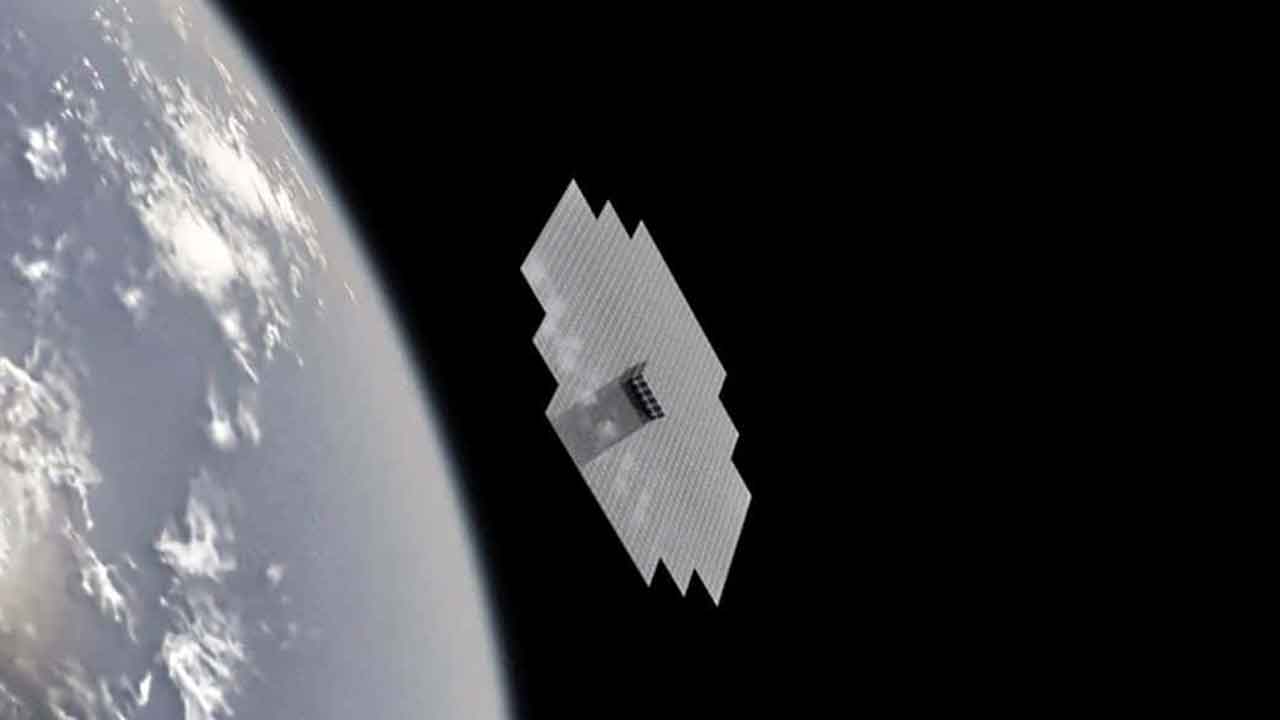The largest commercial communications array ever has just launched. Expect to see it – it’s huge and bright

On the weekend SpaceX’s Falcon 9 rocket launched a giant satellite into space.
Called BlueWalker 3, it’s a prototype by American company AST SpaceMobile, which is to create a space-based mobile broadband network. This is only one of multiple satellites planned for the SpaceMobile constellation – some even bigger than BlueWalker 3.
“The reason why our satellite is large is because in order to communicate with a low-power, low internal strength phone, you just need a large antenna on one side with a lot of power, and so that’s a critical part of our infrastructure,” AST SpaceMobile Chief Strategy Officer Scott Wisniewski told Space.com.
“We think that’s really important for communicating directly with regular handsets, with no change to the handset, with no extra burdens on the user.”
Although this is potentially exciting for those who need that connectivity, astronomers are concerned about just how big and bright this satellite will be.
A New Scientist report has even suggested that the satellite “could outshine all stars and planets in the night sky”.
This is because the satellite is huge and reflective. Once the satellite unfurls – which it will do in the next few weeks – the antenna will measure 64m2.
As Universe Today notes that’s in the same ballpark as NASA’s Echo-1 sphere launched in 1960. That ‘satelloon’ as it was called, was also reflective, and was easy visible to the naked eye over most of Earth.
With plans for a number of these huge satellites, ground based optical telescopes may struggle to image the night sky without disturbance.
This is a continuation of worries from a few years ago, where SpaceX’s own satellite megaconstellation Starlink began to affect astronomers’ work.
The Falcon 9 rocket also included new Starlink satellites, which brings the numbers over 2,200 active satellites – which is about half the number of satellites SpaceX wants in orbit. It’s also worth pointing out that around half of the satellites currently in orbit are Starlink’s.
Radio astronomers are also nervous. As Alan Duffy at the time told ScienceAlert “a full constellation of Starlink satellites will likely mean the end of Earth-based microwave-radio telescopes able to scan the heavens for faint radio objects.”
Currently, astronomers are building a group to tackle this problem called the ‘IAU Centre for the Protection of the Dark and Quiet Sky from Satellite Constellation Interference’. It’s quite a mouthful, but the problem requires not only technological fixes, but tough conversations with these technology companies to come to a solution for everyone.
Luckily, Jeffrey Hall, director of Lowell Observatory in Arizona, US, told Cosmos back in 2020, “neither astronomers nor space scientists are strangers to difficult problems.”
This article was originally published on Cosmos Magazine and was written by Jacinta Bowler. Jacinta Bowler is a science journalist at Cosmos. They have a undergraduate degree in genetics and journalism from the University of Queensland and have been published in the Best Australian Science Writing 2022.
Image: Getty Images
